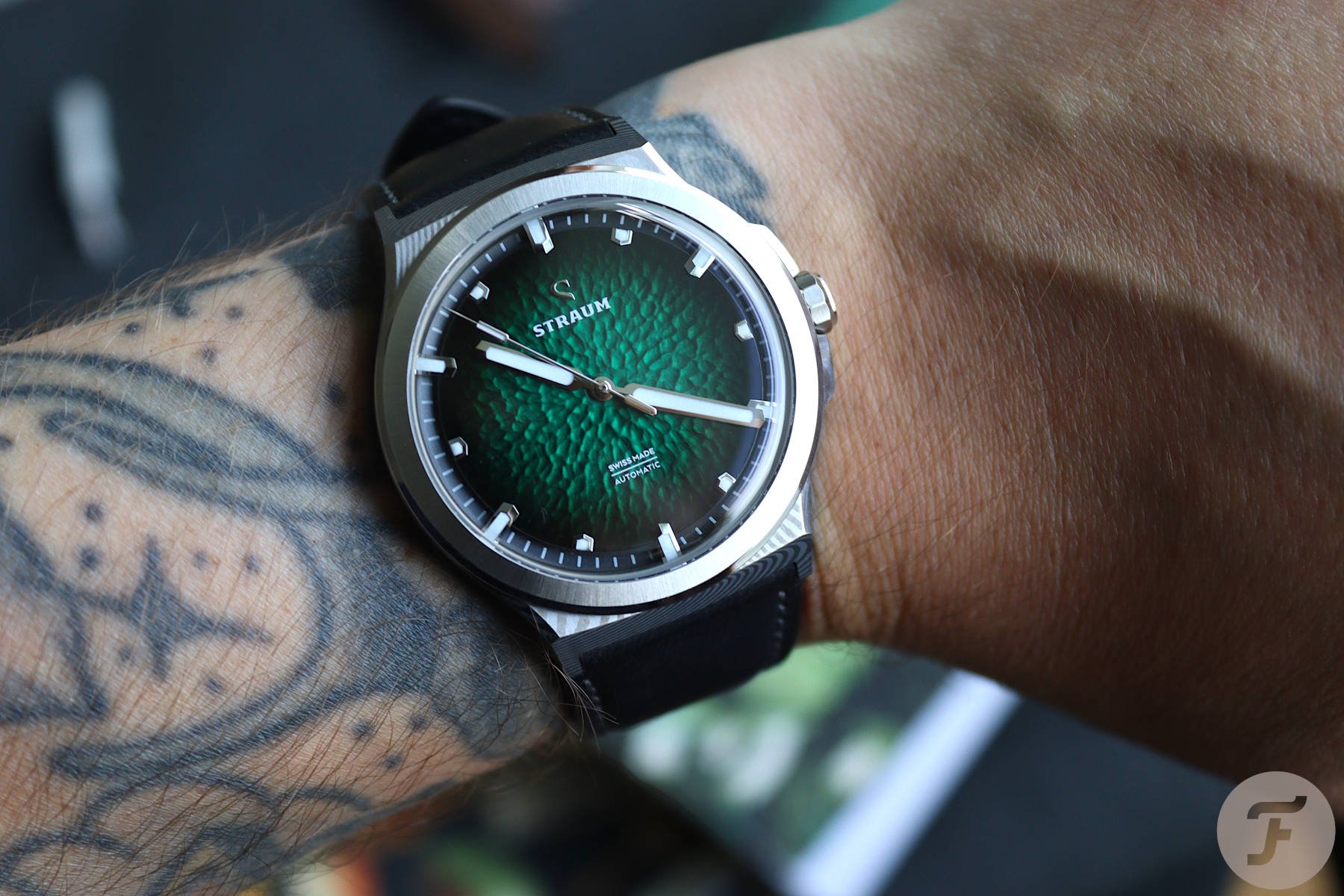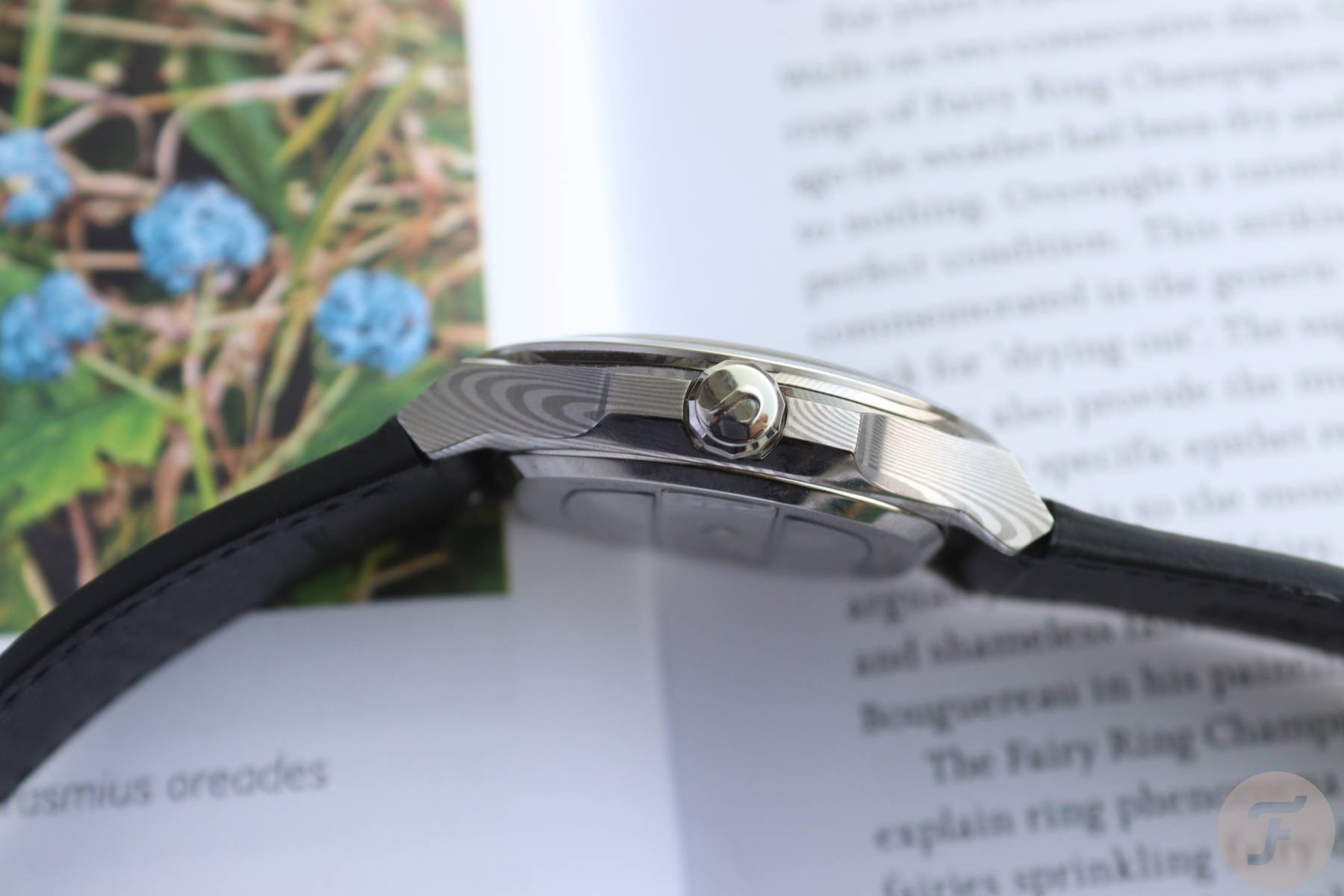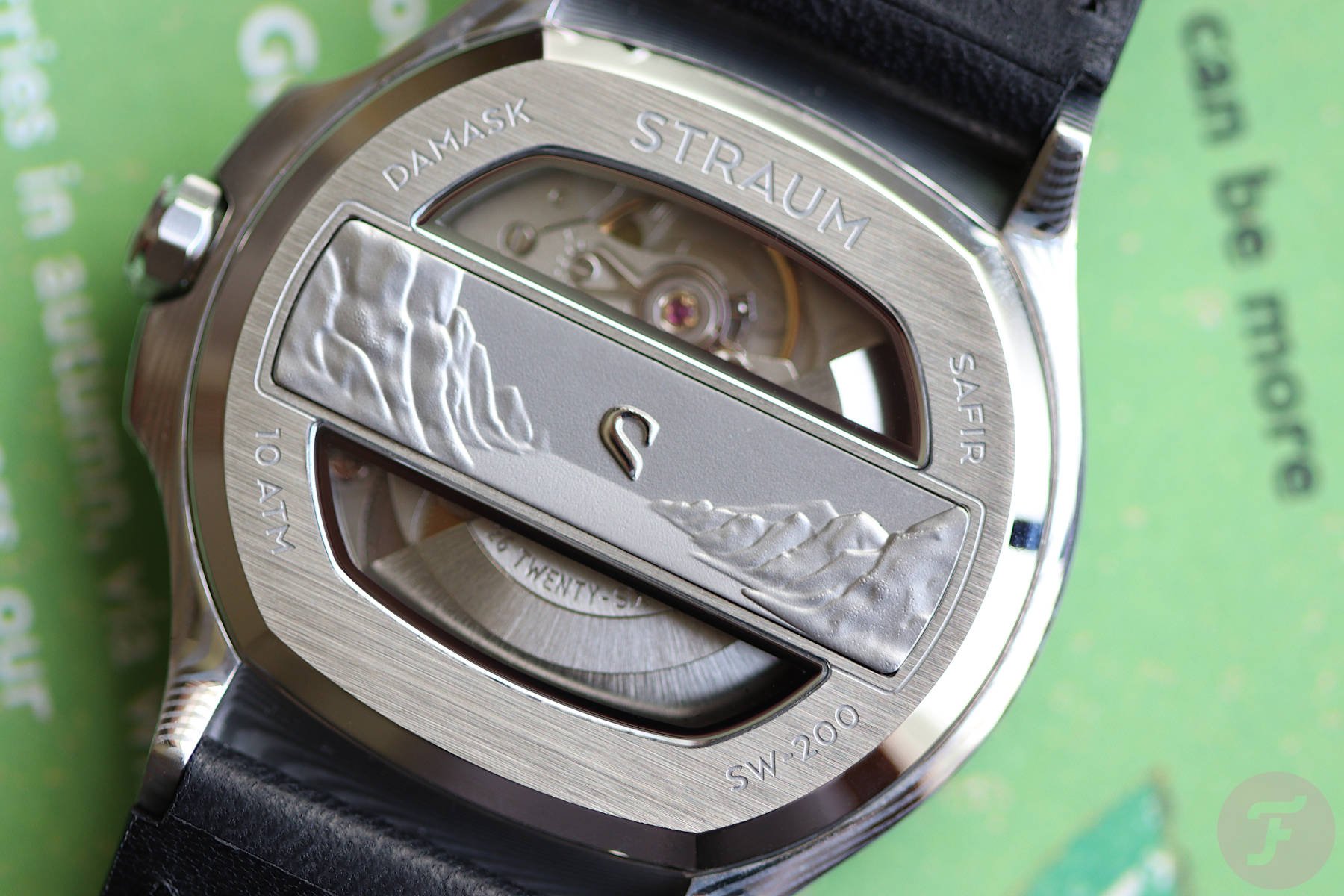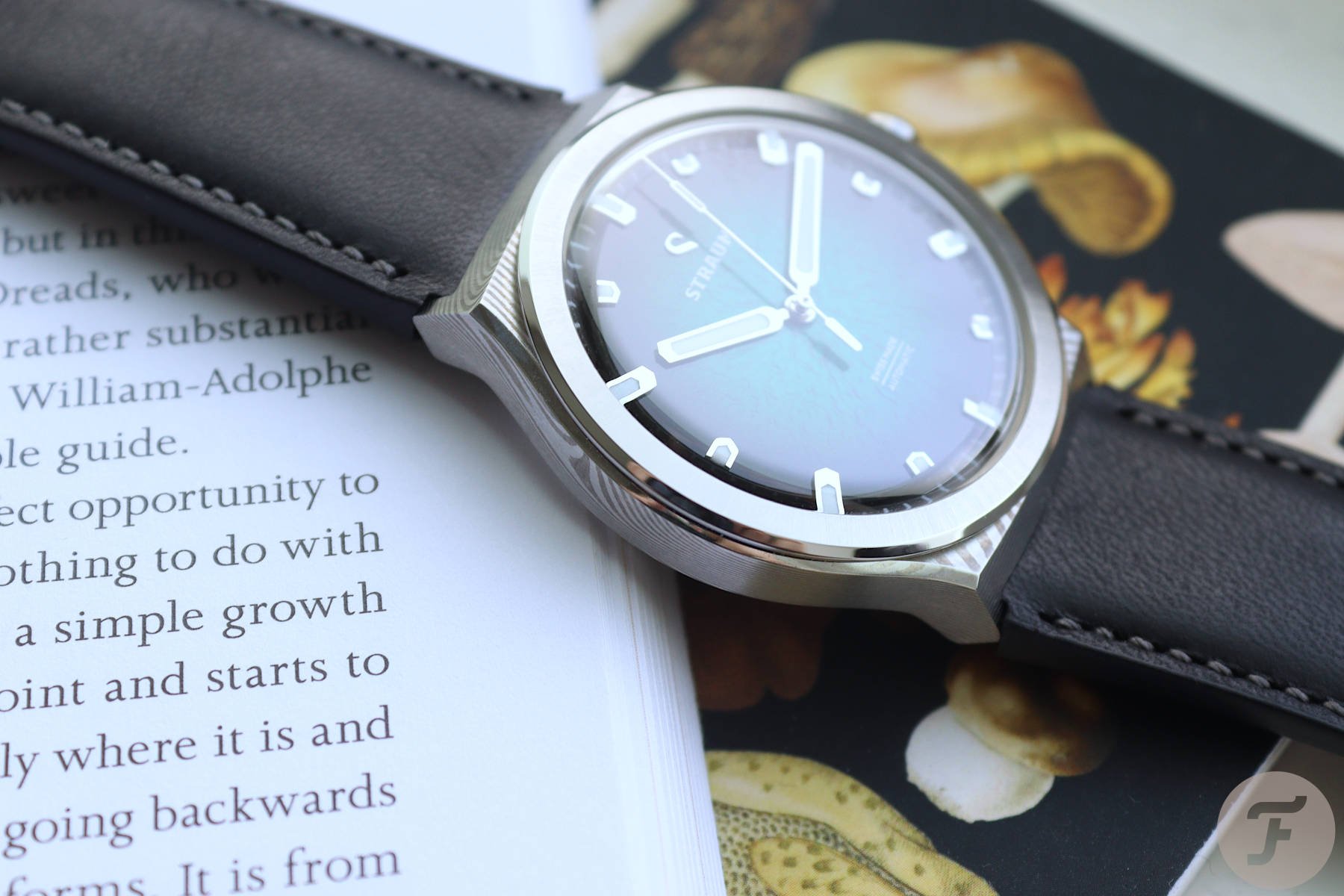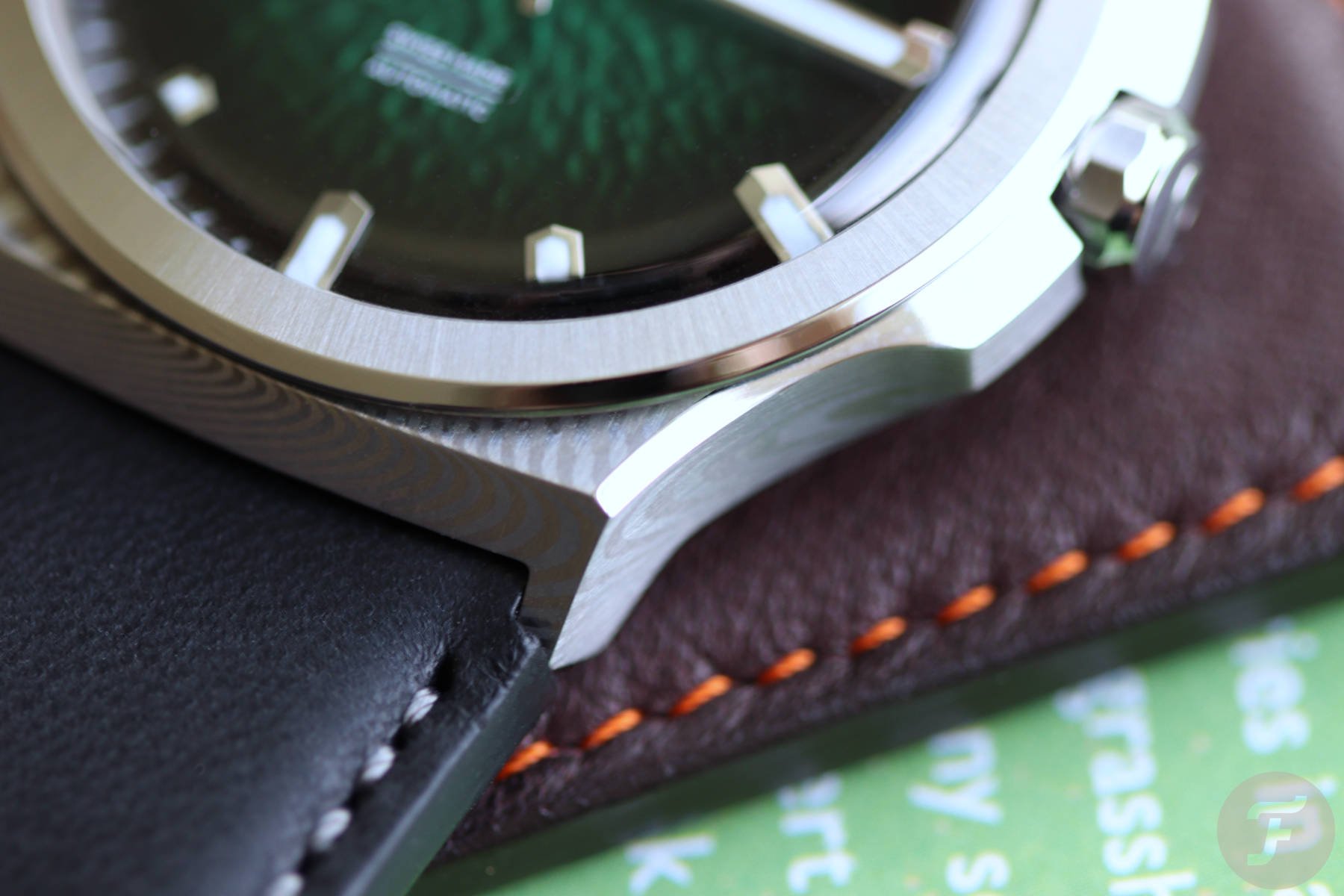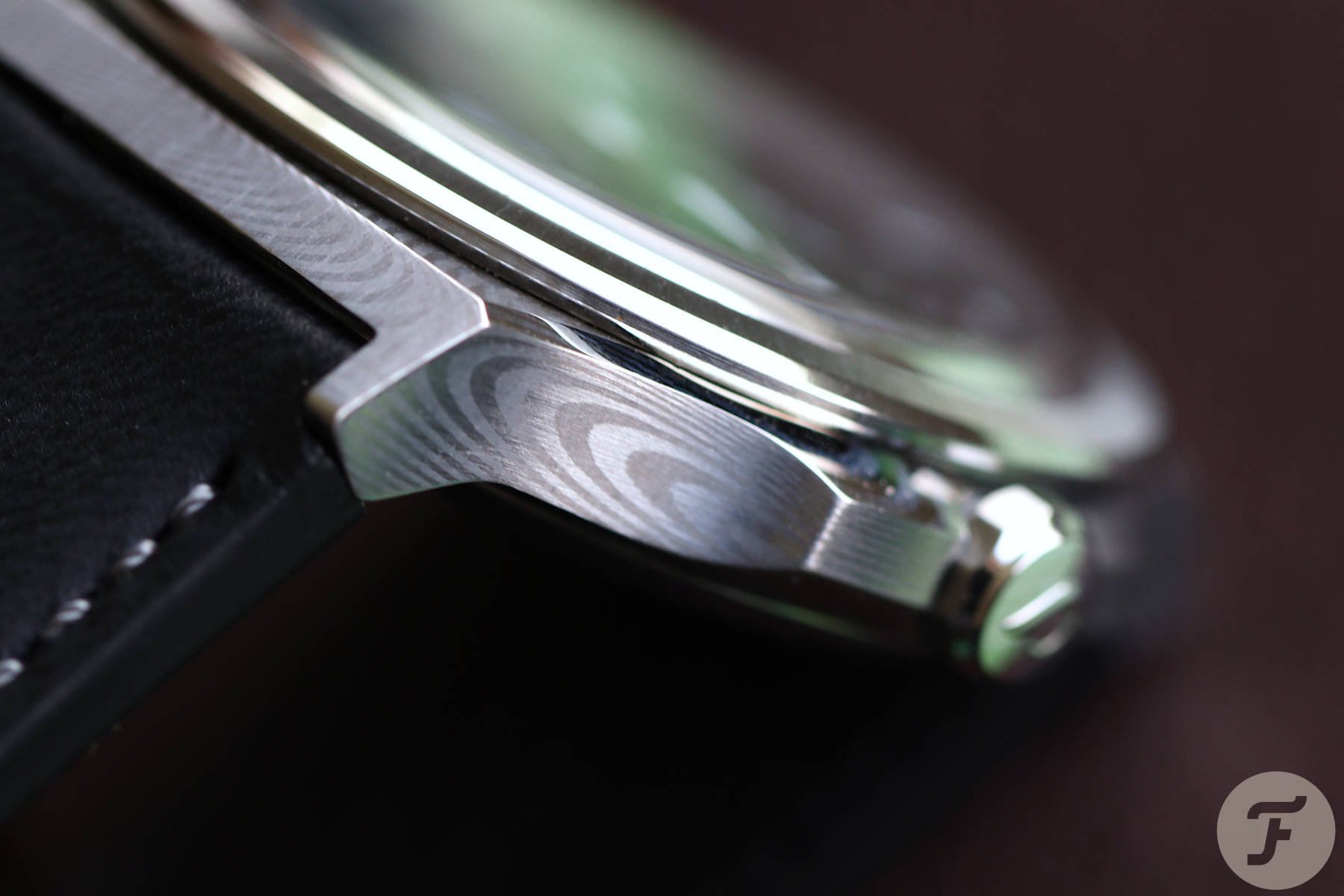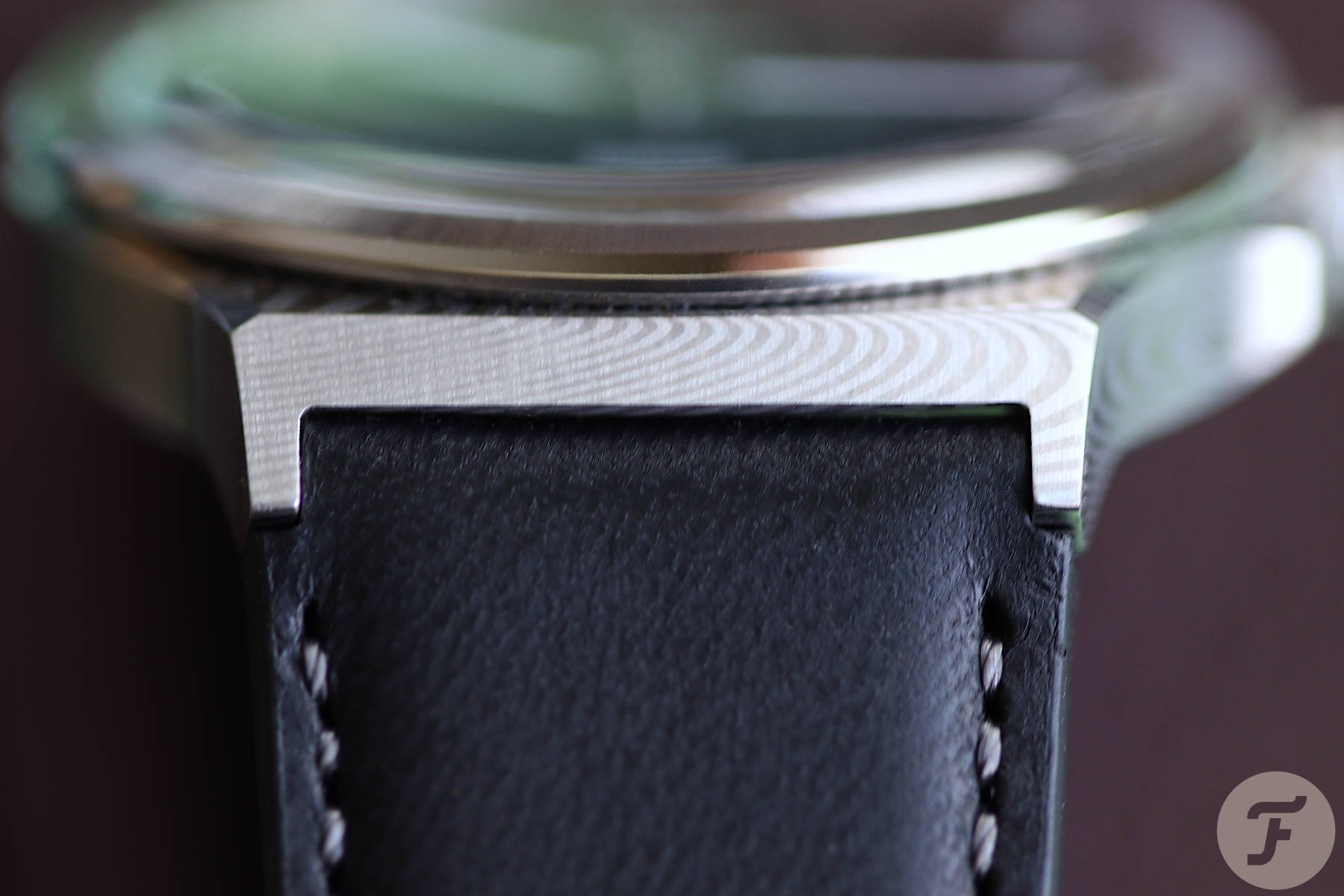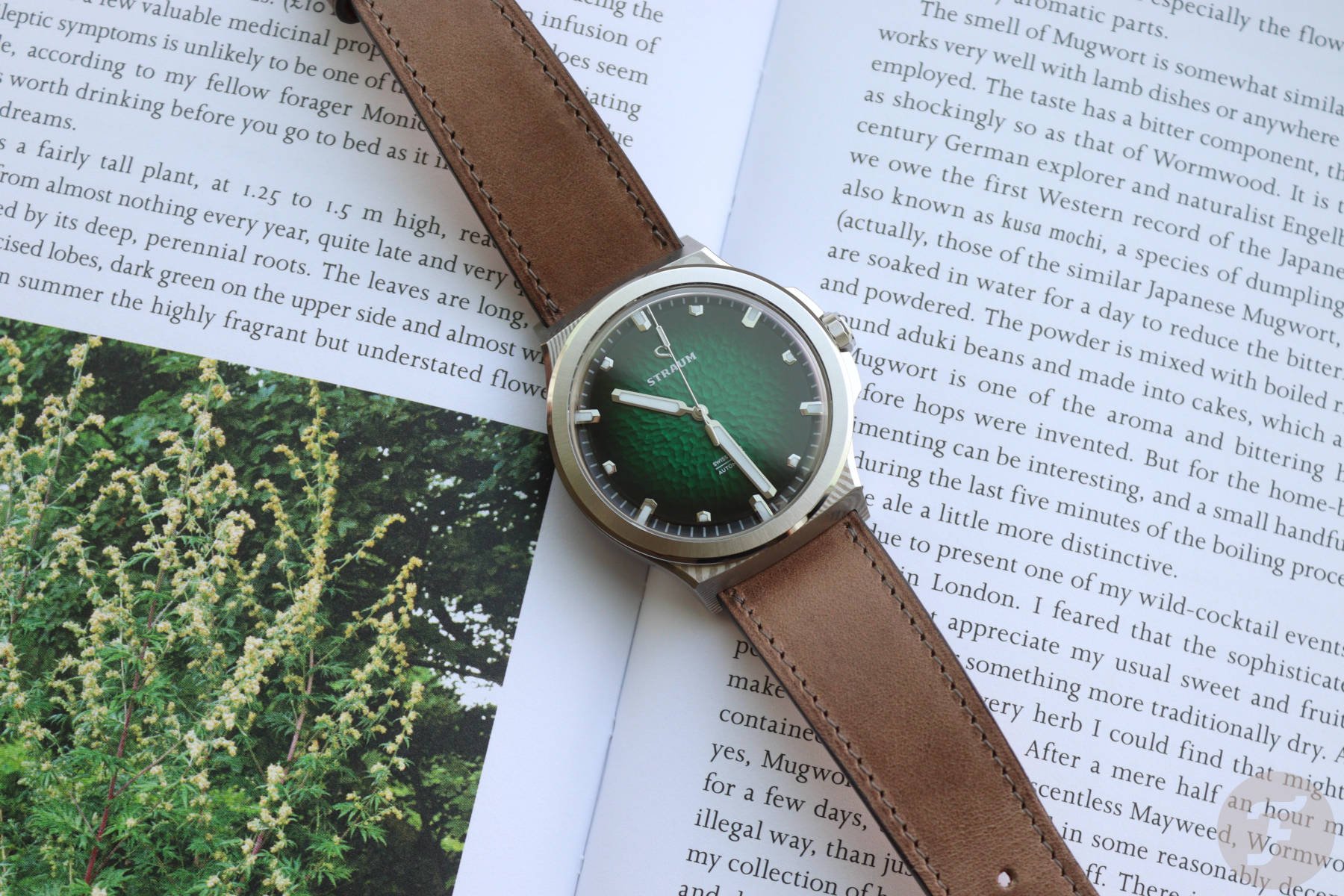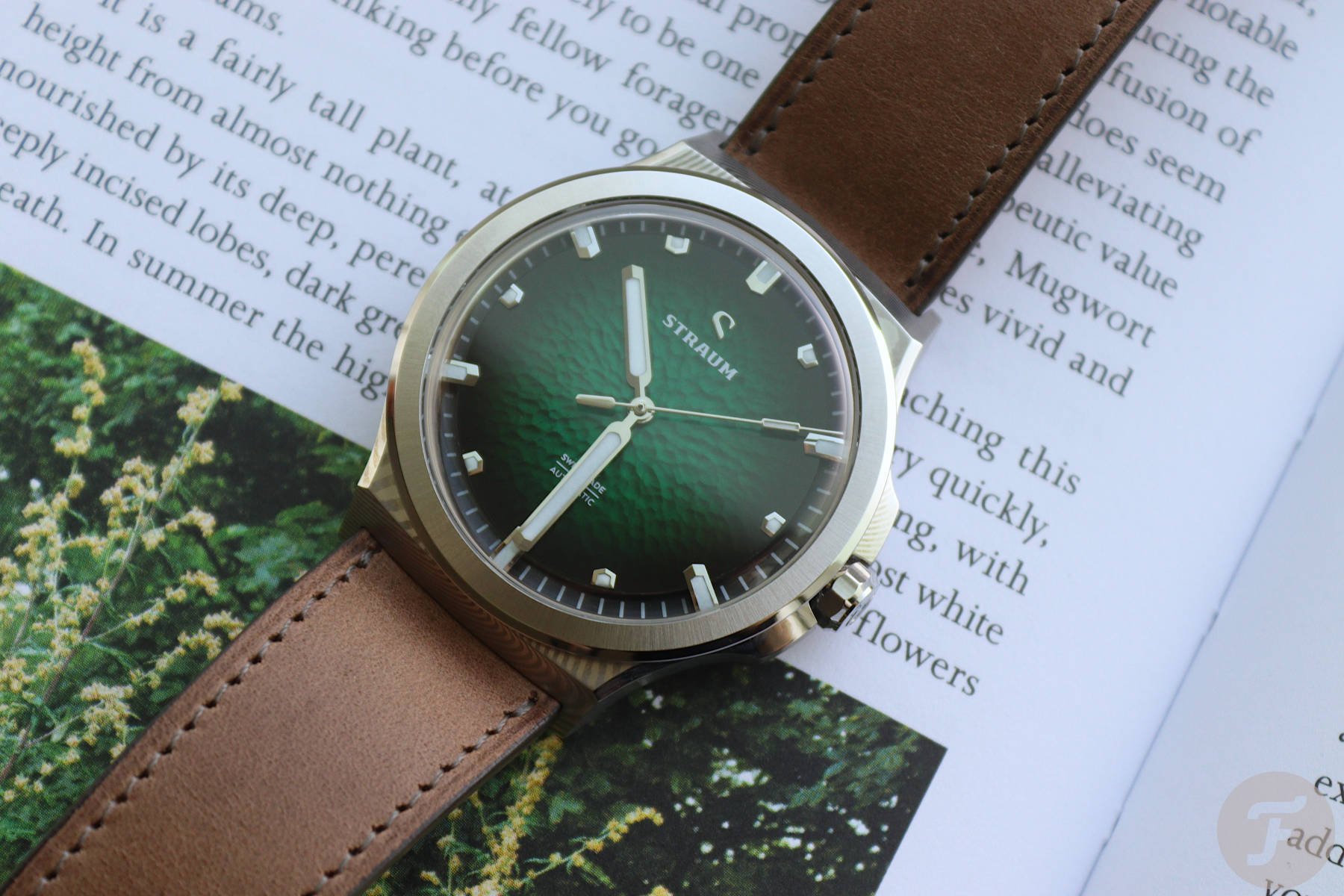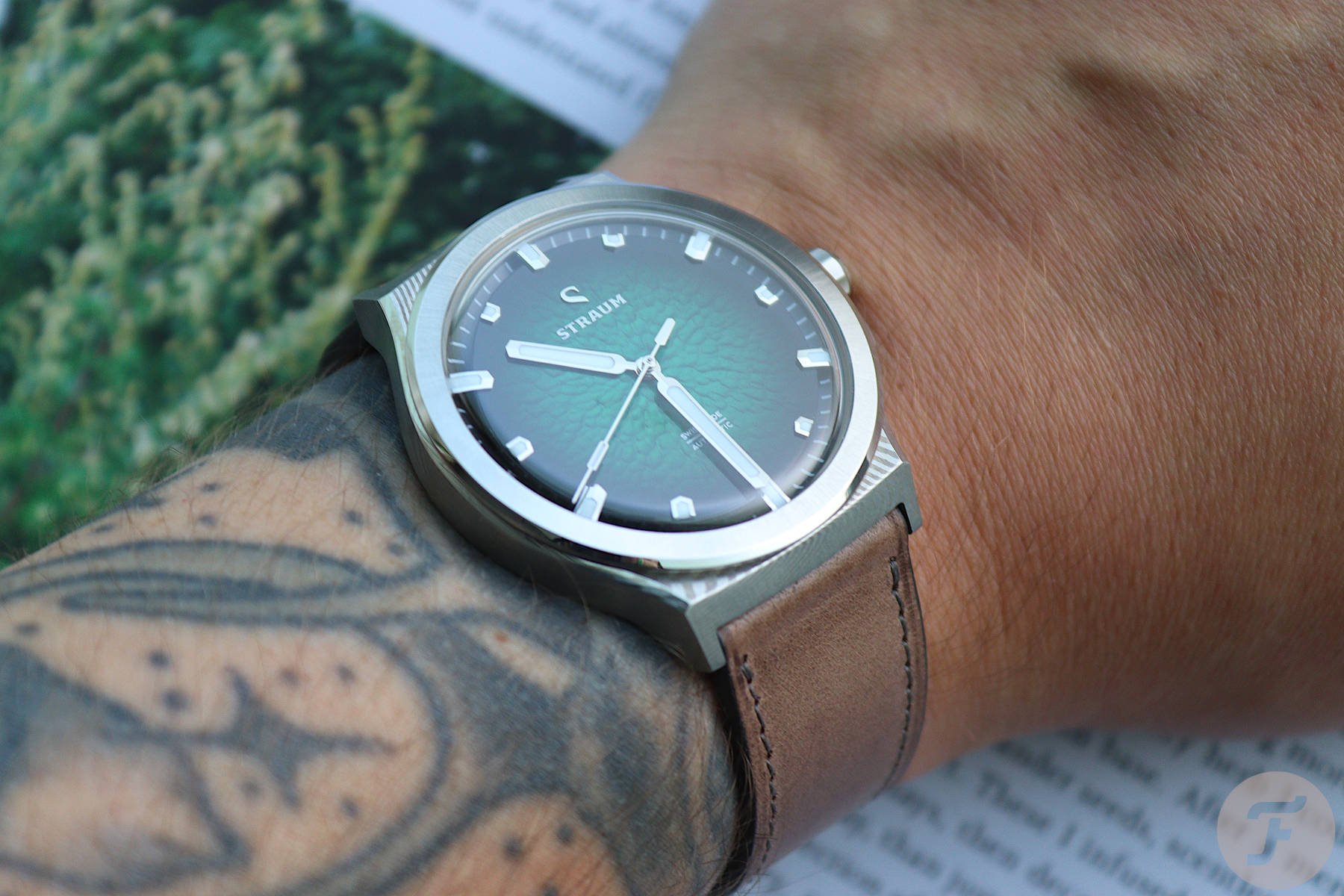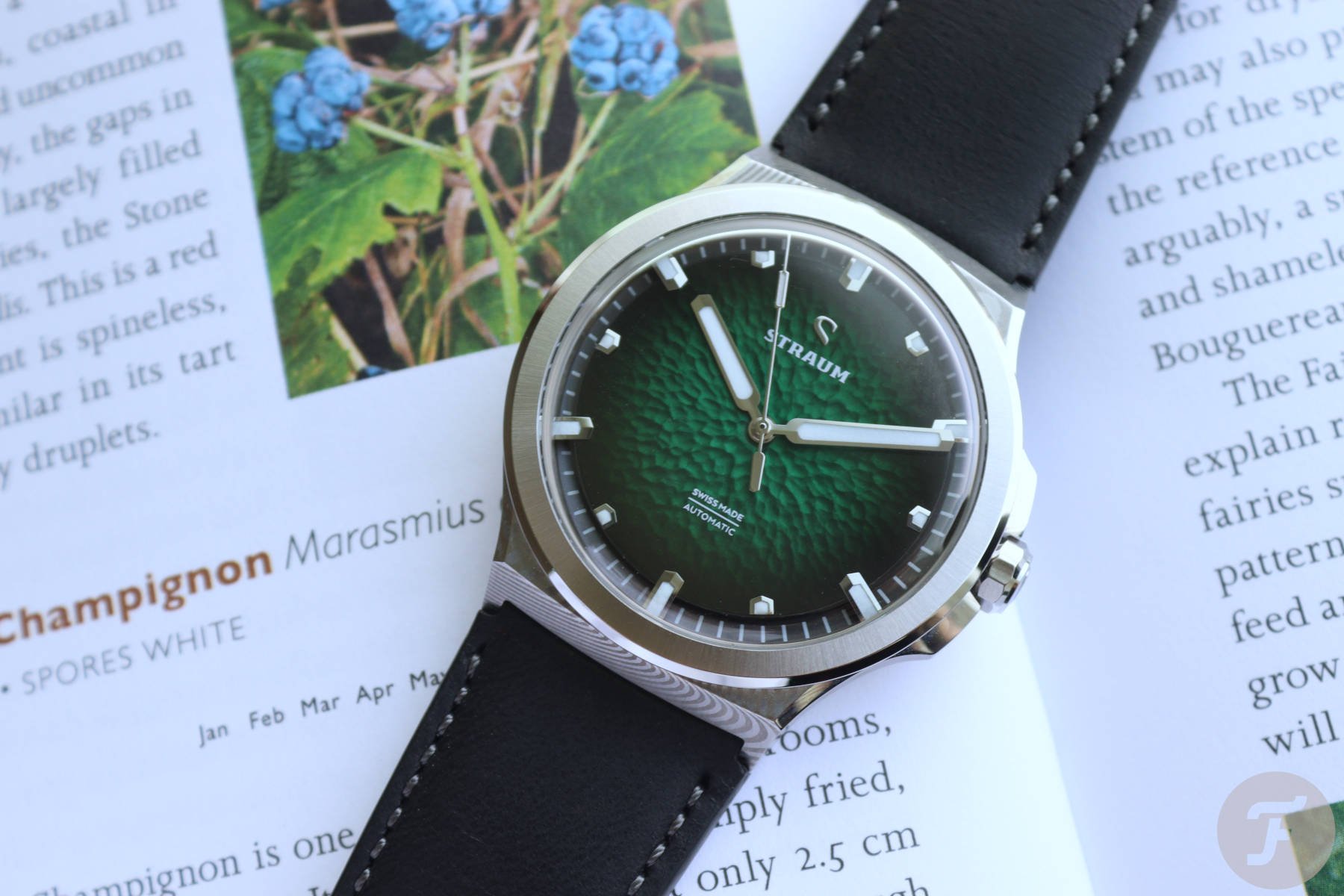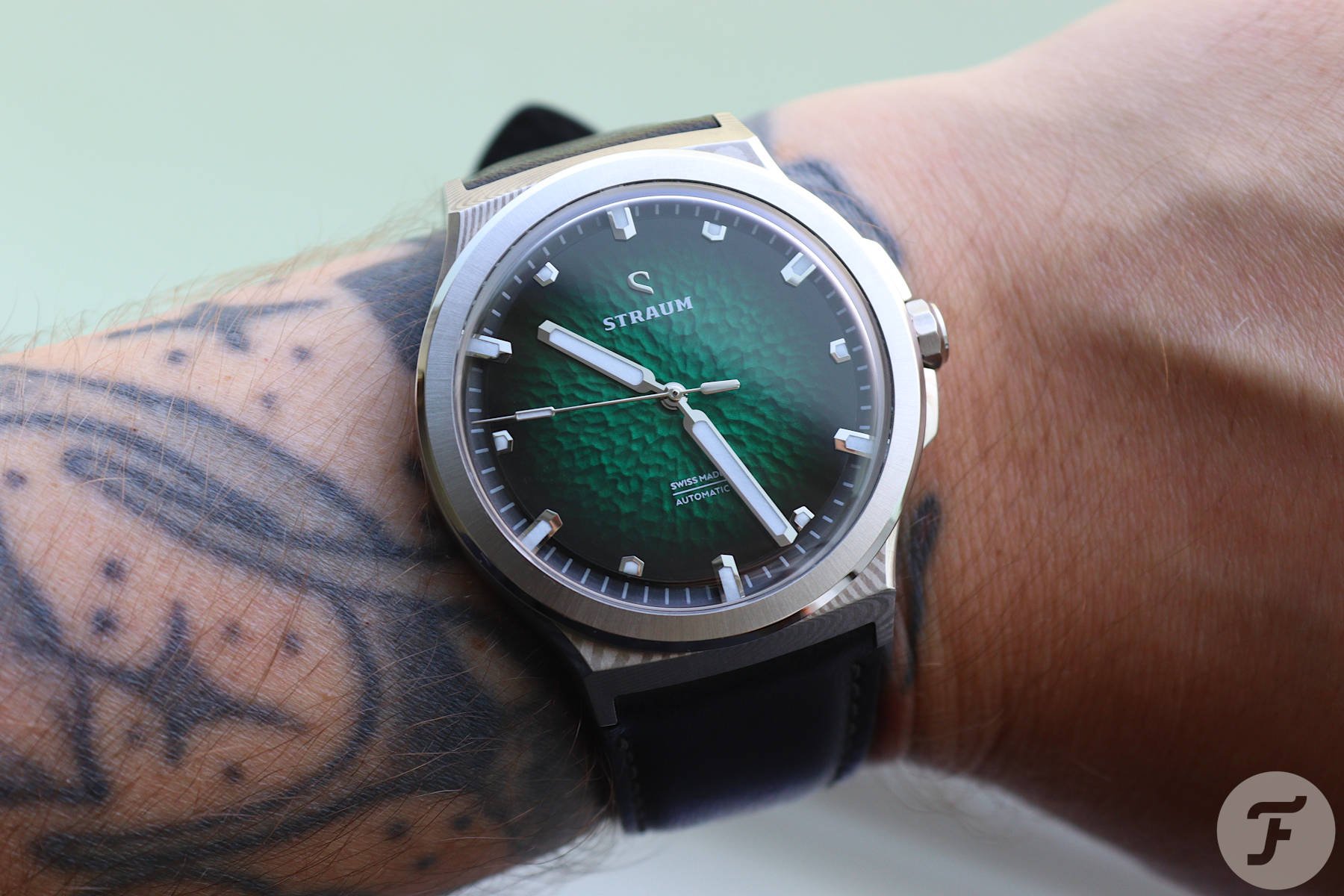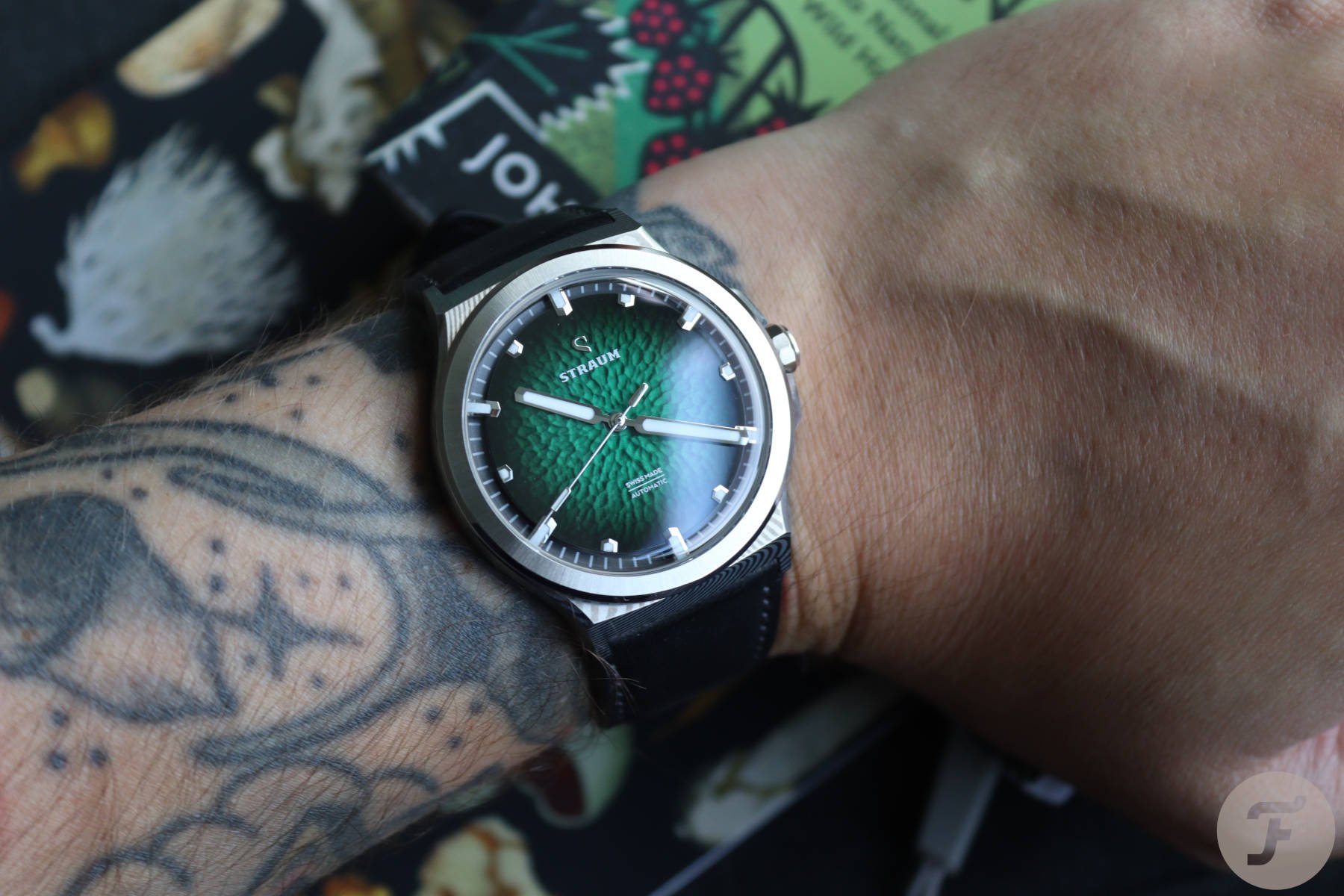Norwegian Independant Brand Straum Levels Up With The Opphav Damascus
This is not the first time I’ve written about the Straum Opphav in one shape or form here on Fratello. I can clearly recall sitting in a Dresden train station last summer when I first came across the Norwegian start-up. I was impressed by the visuals alone and the apparent attention to detail. When I saw the prototypes in the metal in mid-Autumn, I was even more impressed. Straum had launched two models — the regular Opphav and the limited-edition Rastarkalv with its dial made of fossilized wood. Apart from the unique dial, the Rastarkalv also features a case made of beautiful Damascus steel. After feedback from its vocal and active fan community, Straum has now released the Opphav with that stunning Damascus case. With the Straum Opphav Damascus currently gracing my wrist, I thought I’d take a look at it in closer detail and share my thoughts with you.
I’m not going to write a full hands-on review of the Straum Opphav, as Rob has already done that. At the end of the day, the Opphav Damascus is the same watch, just with a different case. I don’t want to repeat the same things in that article, so I recommend you give it a quick read. The only real difference between the Opphav in Rob’s review and the Opphav Damascus that I have here is the new case material.
The Opphav goes to Damascus
Damascus steel is relatively uncommon in the grand scheme of watchmaking. I can only think of a few brands that have watches using Damascus Steel cases, and they all cost several times what the Straum Opphav does. GoS Watches from Sweden uses Damascus steel to significant effect in its watches, with the beautiful metal being the brand’s signature. Sinn uses Damascus for the case and dial in its 1800 Damaszener models.
What is Damascus steel?
Damascus steel has a long, storied history filled with mystery and intrigue. Centuries ago, it went by a different name — wootz steel. Wootz steel is still considered some of the finest quality steel in the world. Weaponsmiths prized it for making strong, stable, and flexible weapons. However, by the end of the 19th century, the production of wootz steel had dried up, and, sadly, the recipe for forging wootz steel has long been lost to history.
Advancements in metallurgy allowed newer refined steel alloys that created a product that worked better than the traditional wootz steel. The physical properties that were so important in swordmaking have no application in watchmaking. In fact, they are detrimental to making a watch case. Instead, modern Damascus steel is made using similar techniques, with modern austenitic steel alloys more suited to making watch cases.
How is it made?
Most modern Damascus steel uses a technique called pattern welding. Pattern-welded Damascus steel is created by forging alternating sheets of high-carbon and low-carbon austenitic steel together into billets. Further working through a series of folding, stamping, twisting, and hammering makes the patterns and many layers. Billets with different combinations of patterns and layers can be further forged together to create even more complex designs — the possibilities are nearly endless.
This process allows the various layers of the different steels to be revealed at different points during the surface etching. This is because the high-carbon and low-carbon austenitic steels react at varying rates when exposed to acids, thus creating the iconic Damascus steel patterns.
A mixture of patterns and textures
Straum’s Opphav built its reputation on its gorgeous rippled dial texture. It’s the kind of dial texture I’ve only seen before from the likes of Grand Seiko, yet the Opphav is rawer, more Nordic. It’s as delicate as Grand Seiko’s dial textures, but it’s unapologetic in that fact. It feels wholly appropriate given the watch’s origins. The green dial on my wrist makes me think of the rolling Norwegian forests as if viewed from above. The blue dial is like ripples on a glacial lake. I could go on, but it’s remarkable how each dial color uses the same texture but conjures a wholly different point of reference in the mind.
With the dial taking center stage, I was perhaps slightly skeptical when I heard that Lasse and Øystein were combining it with the Rastarkalv’s beautiful Damascus case. Would the dial’s prominence be somewhat diluted by competing with the swirling Damascus patterns? Thankfully, the moment I took it out of the case, that fear was allayed. The dial and case interact quite harmoniously. I almost feel that green is “the” dial color to go for here, as the swirling Damascus makes me think of tree rings, nicely playing into the forest-like visuals of the green Opphav dial. I’m somewhat smitten.
But…
I’ve made my opinions abundantly clear on Straum’s Opphav. I’ve been a fan since day one and remain a fan of the brand today. That said, no watch is ever 100% perfect for everyone, and, for me, that nod goes to the strap. “Oh no!” I hear you gasp, “What fatal flaw is he going to reveal to us now? Is it made from the hide of illegally trapped and endangered unicorns?” No, there’s actually nothing wrong with the strap whatsoever. That’s just as well; due to the Damascus case, there will be no bracelet option for the Opphav Damascus. I mean, theoretically, you could put the steel bracelet on the Damascus case, but only a monster would do so.
Straum’s veg-tanned leather is wonderfully supple, comfortable, and smells as amazing, as you’d expect and hope. So, what am I complaining about? Well, it’s the shape of the strap — specifically, the taper. While the lug width is 22mm, the strap flares to 25mm to meet the outside edge of the lugs before tapering down to 20mm at the buckle. Personally, I’d prefer a more classic 22mm, which tapers down to 18mm at the buckle, just like the strap pictured above does (minus the initial flare). I think it would further refine an already classy watch. So, there’s nothing wrong with the strap, and the quality is excellent. It’s just that I would prefer a little extra taper on the stock strap (and no flare to begin with).
Straum gives wearers more flexibility for strap changes
Another reason this is the most minuscule of things to talk about is that we all know how easy it is to change a strap. I don’t have a single watch in my collection that I’ve not swapped the straps about when wearing. Straum knows that people like to swap out straps and tailor their watch appearance to their personal style. Consequently, the brand included an extra set of spring bar holes to accommodate different straps — a thoughtful little touch that you don’t see too often at watches in this price range. I thought I’d try out a lovely little leather strap from French maker Atelier Romane that I had in my collection. The warm shade of taupe looked like it’d complement the rich green dial. I think I was right as it looks great, in my opinion. The strap tapers from 22mm down to 18mm at the buckle and offers a slightly improved visual balance. That’s just my opinion, but let us know what you think.
Does it justify the price?
So, does it justify the €221 price difference? There are two ways of looking at this question — justification vs. worth. I will attempt to address both because sometimes the lines between the two concepts are slightly blurred. Justifying the price is the easier of the two routes. By justification, I mean is there a fair reason for Straum to be charging €221 more than the regular Opphav? Well, that’s relatively easy to answer because the Damascus steel source material is much more expensive than regular steel. The case manufacturer orders regular stainless steel in such large quantities that it’s quite cheap. However, Damascus steel is more expensive by weight, plus the case manufacturer orders far less, so the price is significantly higher. So yes, the price is justified, but is it worth it?
UPDATE: As Patric and Warky pointed out in the comments, the grade of the movement has also received a bump too. The regular Opphav uses standard grades, but the Damascus Opphav features the Special (Elaboré) grade. What does this mean? The movement gets a bump in accuracy and is regulated in one additional position. Readers will also be happy to hear that the ghost date position is now removed too. Straum said that in the feedback it received from its community, this was one of the upgrades that people requested moving forwards, so it’s nice to see the brand listening and quickly adapting.
Worthiness is a personal opinion. Does the final product offer you that extra €221 worth of value compared to the regular Opphav? Only you can answer that question. It depends on how much value you put on the Damascus case upgrade. For me, I absolutely think it’s worth it. First of all, I have long believed the standard Opphav to be batting well above its price point. So the price of the Opphav Damascus is still an excellent value proposition when you consider the more-than-reasonable starting price and the rarity of Damascus steel watches.
Straum Opphav Damascus price and availability
Breaking into the over-€1,000 bracket means that the Opphav Damascus has some tough competition, but I believe it offers something very different from its competitors. Sure, it won’t be for everyone, but Straum’s Opphav Damascus is a unique watch with excellent build quality at a very reasonable price. The final decision is up to you, though. Let me know what you think in the comments below!
You can find more information about the Opphav Damascus and purchase it on the Straum website. The collection is limited to 250 pieces in total across all four colors.
Follow me on Instagram: @davesergeant | @fratellowatches

